Table of Contents
- Positive Reaction to the “Play Area” and “Knocked-Out” Definition Proposal
- Issue with “Extended Play Area”
- A Video Example Which Illustrates the Key Issue
- What does each opinion represent?
- Why treat the area outside the Primary Play Area as a “Penalty Area”?
- Why allow for Beyblades to win in the Extended Play Area?
- Win Conditions Should Be Inflicted With Finality
- Defining the Stipulations for Victory While in the EPA
- Accepting the Natural Gameplay Produced by Stadiums & Large Parts
- The Issue With the “Extended Play Area Should Be a Penalty Area” Proposal
- Stadiums with Flat Areas in the Primary Play Area
- What happens if we say you cannot win in the EPA?
- The Strength of the “Extended Play Area” Concept
- What do you think the KO and Play Area definitions should be?
Affiliate Disclosure: If you buy something through some of the links on this post, you won’t pay any extra, but we’ll get a small commission. This helps us keep things running. Thanks for your support!
Positive Reaction to the “Play Area” and “Knocked-Out” Definition Proposal
After posting “Redefining “Play Area” & “Knocked-Out” in Beyblade Stadiums (And How This Changes The Game)” recently, I received a lot of feedback from the community on my new proposed definitions for “Play Area” and “Knocked-Out” in WBO Beyblade tournaments.
I invited everyone to deeply scrutinize my proposal as the goal is for it to become our universal standard moving forward.
Please be sure to read the original post on this topic before proceeding further in this update.
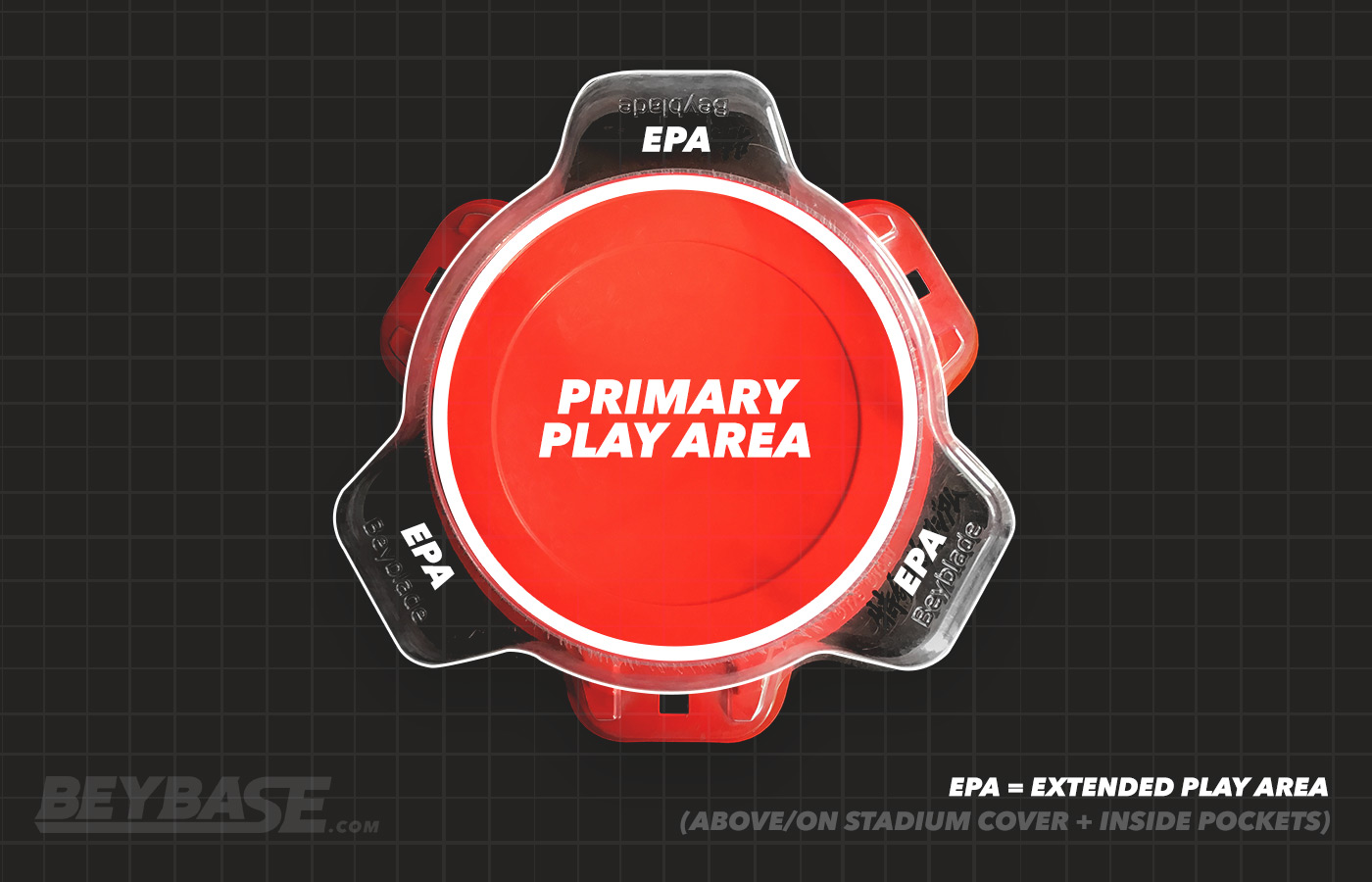
Proposed Definitions
For reference, here are the proposed definitions:
Play Area + Knocked-Out Definition Summary
If a Beyblade is spinning anywhere within BeyStadium and has not been bursted/separated or knocked beyond the point of a feasible and quick return, it is in-play and the match continues.
Full Play Area Definition
The play area is divided into two distinct areas:
Primary Play Area
The Primary Play Area is the space in the central area of a BeyStadium before the point at which any exits, pockets, walls, or stadium cover openings begin (if they exist).Extended Play Area
The play area can be extended under specific circumstances:Some BeyStadiums have design features–such as pockets–outside of the centralized primary play area that Beyblades can become trapped in or on permanently or temporarily.
These areas may only be considered as part of the play area if the Beyblade is spinning in or on them and can feasibly return to the Primary Play Area quickly.
Full Knocked-Out Definition
A Beyblade is knocked-out when after being launched:
- It does not enter play area and cannot enter OR
- It exits the play area while spinning and cannot return OR
- It stops spinning outside the Primary Play Area.
A Beyblade “cannot enter” or “cannot return” and is therefore considered knocked-out when:
It reaches a spot outside the Extended Play Area where it cannot feasibly return to the central Primary Play Area quickly and continue spinning.
However, if it continues to spin in the Extended Play Area where it can still feasibly re-enter the Primary Play Area quickly, it remains in-play.
The reaction to my proposal was generally positive. For instance:
I think this new ruling seems very well thought out and considerate. I am of the opinion that allowing bounce backs will be a huge win for organizers/judges while still allowing attack types to shine. – SupaDav03
Why creating consistent definitions is important
It will future-proof the game
The concepts of “play area” and “knocked-out” are fundamental to the game of Beyblade, so the definitions we use for them should be solid and applicable across generations.
Doing so will ensure that no matter how the game evolves, what environments it is played in, or what secondary concepts are modified in certain rulesets, these core concepts will be defined and easy to understand just as other core concepts are (such as winning if you spin longer than your opponent, selecting Beyblades before a match secretly, launching at the end of a countdown, etc).
It will make it easier to build an inclusive community
One aspect of the WBO’s new Project AIDA initiative is to “Make the WBO community more welcoming and valuable to all Beyblade fans” and to “Be More Inclusive and Flexible”.
Part of what this means is that our rulesets should be re-evaluated to help us move towards accomplishing these goals.
We’ve started to do this recently with updates such as the announcement that all Takara Tomy/Hasbro stadiums may now be used for unranked events.
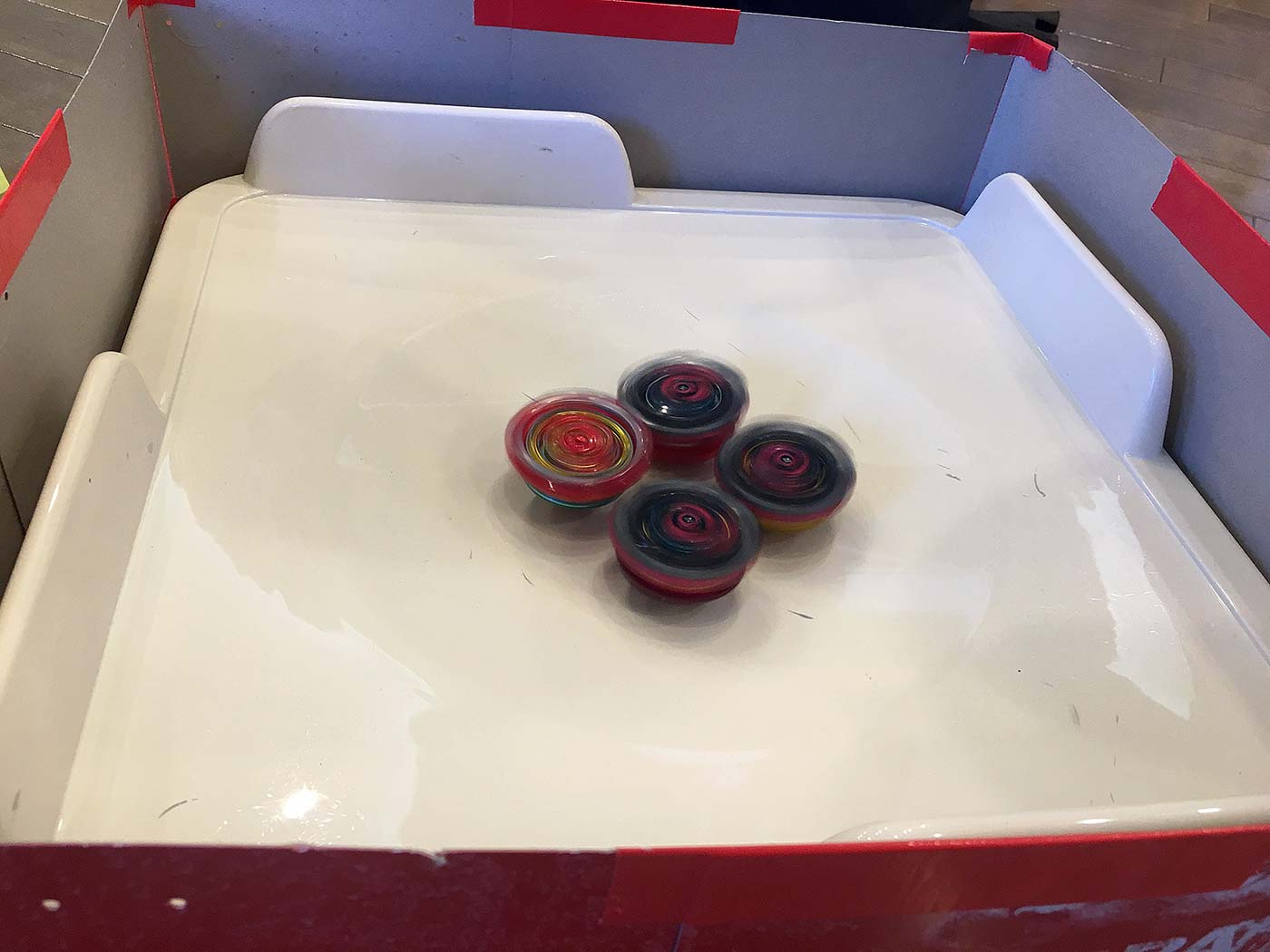
With this now in place, it has become even more important for our rulebooks to better define the core concepts of “Play Area” and “Knocked-Out” so that they can clearly and consistently be applied to the varying design of all stadiums in existence.
Our current definition of “Play Area” is vague and technically non-existant, and our current definition of “Knocked-Out” is inconsistent across formats and difficult to judge in some cases.
Making the definitions philosophically consistent and considerate of all Beyblade stadiums will make the game easier to understand for players, easier to judge, and easier for staff to manage Organized Play regardless of however the game develops in the future.
Issue with “Extended Play Area”
However, one issue in particular seemed to create a distinct divide across the Beyblade community which we will need to resolve.
The issue stemmed from the ability for Beyblades to win while in the “Extended Play Area” (EPA) in rare circumstances.
Some players believed this area should be treated as a “penalty area” outright and that they would be required to return to the Primary Play Area (PPA) in order to achieve a win condition.
This would effectively make the PPA the only “play area”.
Shindog was first to raise the question and idea of this in the second question and subsequent reply he posted here.
With my proposed definitions, the EPA is named as such because it allows you to briefly still be considered in-play while you continue to spin and can feasibly and quickly return to the PPA.
With this being the case, there are conceivable situations where it becomes possible to win a round while in the EPA during the point at which you are both spinning and can feasibly return to the PPA.
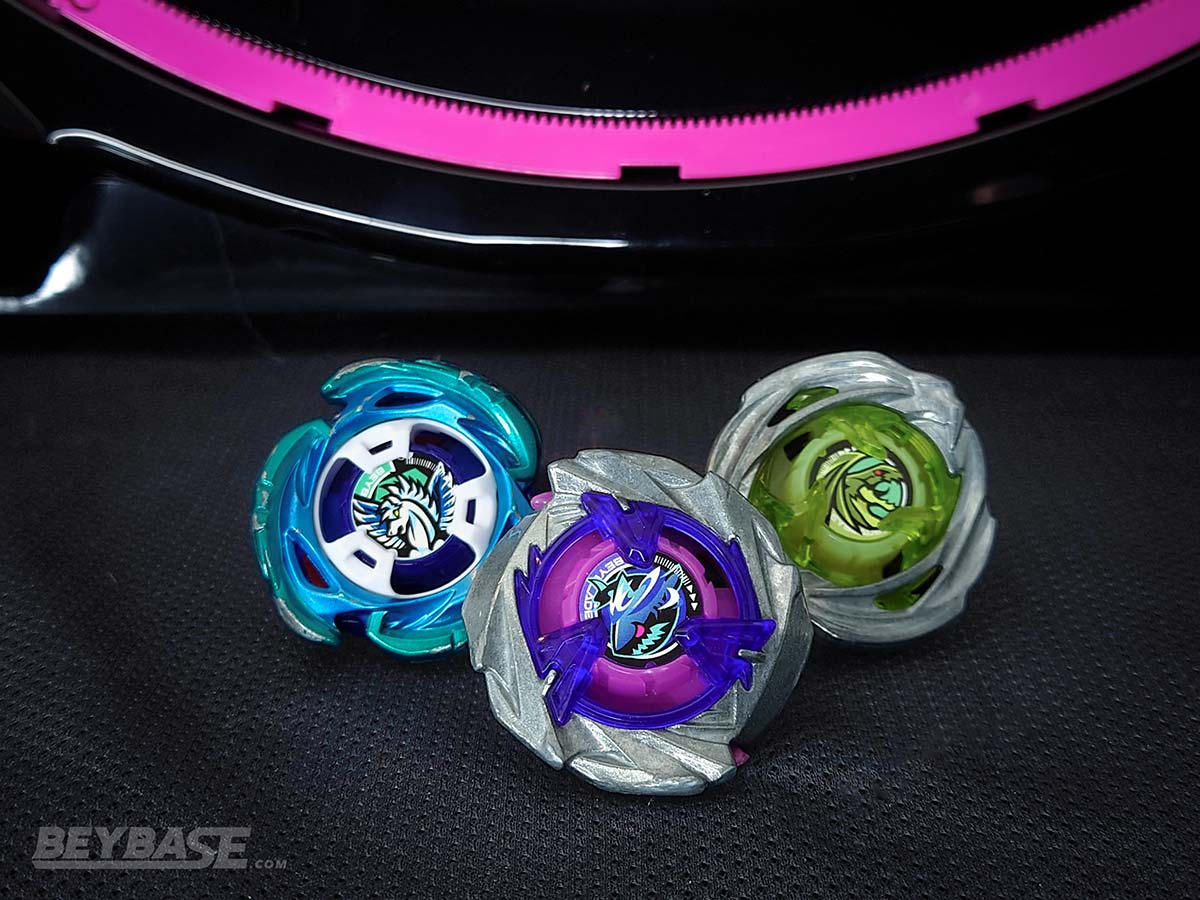
Become an expert with this player’s guide, featuring the best combos and strategies for the stadium.

Sponsored: Order the newest Beyblades at malloftoys.com!
Heads up: If you buy something through Mall of Toys, you won’t pay any extra, but I’ll get a small commission. This helps me keep things running. Thanks for your support!
A Video Example Which Illustrates the Key Issue
Example: Imperial vs. Zwei Battle in Burst BeyStadium Standard Type
In order to get a better sense of what people think is right and why when it comes to defining these two fundamental concepts of “play area” and “knocked-out”, I shared this footage from a battle I recorded at a tournament in Japan in January 2020 between Zwei (Red) and Imperial (White).
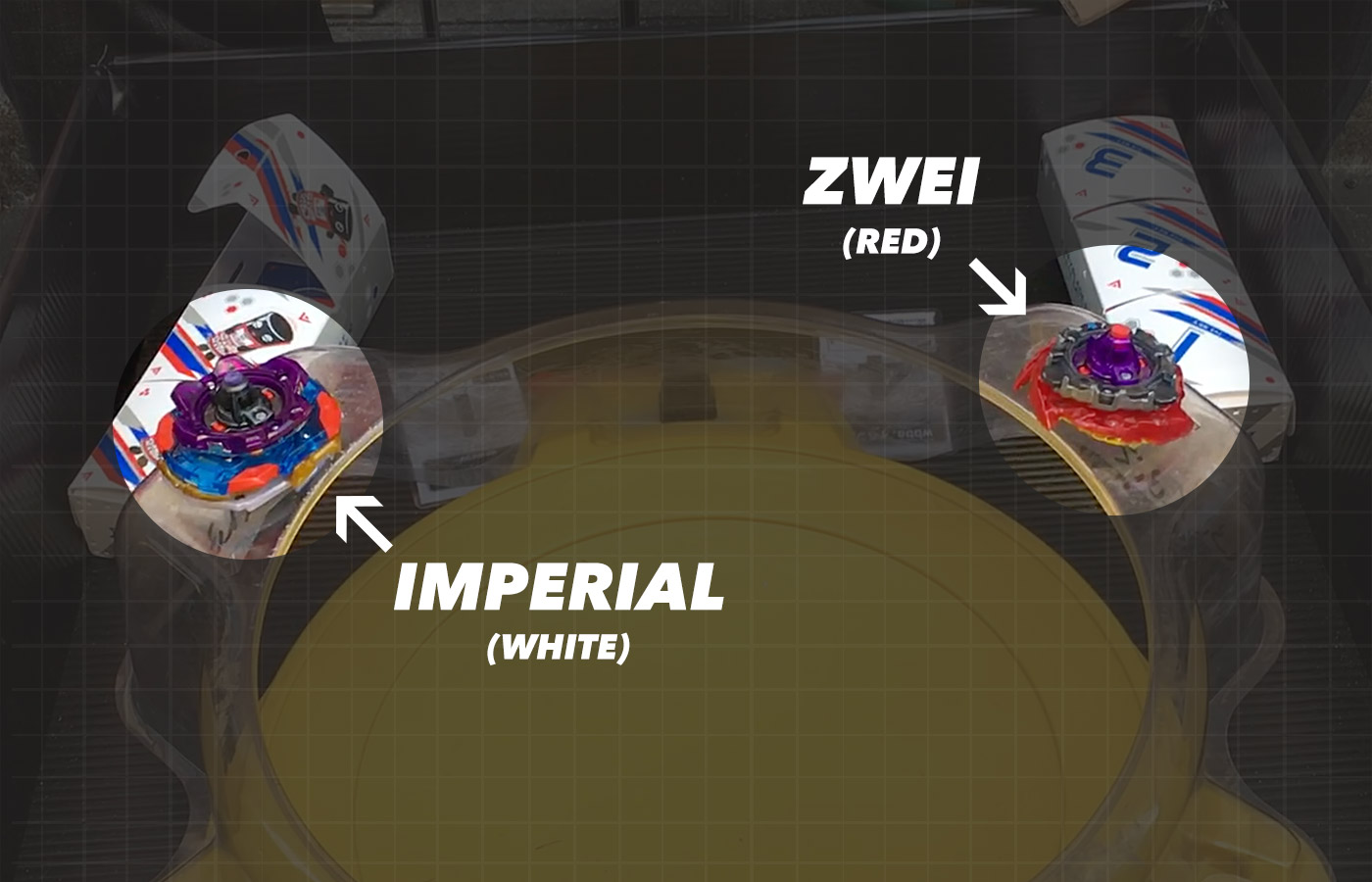
I asked:
Who do you think the winner should be in this example? And most importantly, why? Battle starts at 0:07.
I asked on the WBO, Facebook, Instagram, and Twitter and received responses from players around the world.
Depending on your definition you could say either Zwei or Imperial won in the video. There is no objectively “right” or “wrong” answer.
A divide between the west and east
The divide between the western and eastern (Japan) opinions I received was especially pronounced. Most in the west seem to be on the side of Zwei, but almost everyone asked from Japan has said that Imperial was the winner.
And of the people I’ve seen asked that have no connection or experience with the game have said Imperial. This is a perspective I found particularly interesting and it might suggest what outcome seems the most “fair”.
Opinions of myself or any other person with extensive experience with the game should be seriously considered. But they also have to be considered while remembering the context within which they were formed.
For players in Japan, it’s their experience with the WBBA and the culture of Beyblade in their country. For players on the WBO, it’s their experience with our organization and the culture of Beyblade in our community.
Questioning our assumptions
Knowing this, it’s important to try and take a step back and question any personal biases that may exist within us.
Having played in WBO tournaments for over a decade and knowing our history while also having played in tournaments in Japan for the past five years has influenced my personal opinion in a way which I think may be unique within the Beyblade community.
But in the process of thinking about these concepts, I have tried to question my assumptions at every turn.
What I’d like to do is present both the reactions I gathered, my own personal opinion, and what choices the two options effectively represent.
Ultimately, I don’t believe there is a “right” answer here. But we have to pick one.
Below you can find the responses separated by opinion: Imperial Wins, Zwei Wins, or Undecided.
Opinion: Imperial Wins
1234beyblade
After a long discussion with 1234beyblade about this and my proposed rulings, he agreed that Imperial should be the winner and that in order to lose, the “death” of a Beyblade has to be certain if it enters the pocket/EPA.
In the Imperial example, it was not certain before Zwei’s certain death. He felt my proposed definitions of Play Area and Knocked-Out would make calls fairer in the end.
1234beyblade’s Friends (No known connection to Beyblade)
1234beyblade asked five friends of his with no connection to Beyblade and they voted 4-1 in favour of Imperial winning.
Kei’s Facebook Friend (Experienced member of Japanese Beyblade team WARI-BEY)
I think the red top wins because the white top is obviously out in the first his red top attack・・・・
違う❗😅 [Translation: “That’s wrong!”]
But the transparent cover is not a fence. Therefore, the attack of the red top is not effective and it does not come out of the white top, so the white top remaining until the end wins❗
Kei’s Facebook Friend (No known connection to Beyblade)
As a person not knowing much about it, assuming being on the stage and spinning are what count as being in the game still, both of those things seem to have stopped on the red one briefly before white. It goes out, then white, it stops, then white. So, my call, red lost, white wins
BeybladeTourna1 + His Local Beyblade Judge Friend
There is two ways of looking at this, either Imperial entered an exit and would fall out and since it did first it would lose OR Imperial stayed in a semi play area and could almost always come back into the main play area, and so Zwei lost. With the new rule definition, Zwei L’d
[Kei: Right. But ignoring any particular rulings, how would you personally like to see a match like this called? And why?]
Hmm, good question. I don’t think I’ve ran into this situation down here while I was judging, but I think if I saw it, I would say Zwei lost, as we already had the bounce out of exit is still in play rule. That or call it a Tie, in the moment without precident I think I would Tie
Actually imma go get my other judges to look at this.
Only gotten one answer so far but they called Imperial winning due to hitting the floor second.
ya_channel_
It’s an Imperial victory.
Because Zwei got to the ground first.
The definition of overfinish is when contact is made outside the stadium.Therefore, I think size is an important factor in the latter half of the Turbo(超Z).
MeltyBox
Hello. I think Imperial won. Zwei touched to the ground faster than Imperial, and Over-finished established at this moment. Similar case, we look usually that Bey was sandwiched between stadium black-base and clear-wall. In this case, I call spin-finished.
unknownspelling
多分公式戦ならインペリアルの判定勝ちですけど、プライベートならやり直しでいい気が。
[Translation: “Perhaps in the official game it will be an Imperial decision win, but if it’s a private game, it’s fine to start over.”]
tkn0906
インペリアルですね
[Translation: It’s Imperial.]
Queen_Lapras131
インペリアル 地面に触れるまではスピンが継続しているという公式の裁定ですね
[Translation: Imperial. It’s an official ruling that the spin continues until you touch the ground.]
Flame-Byxis
In the Battle Imperial entered the pocket first. However, it was still technically spinning on the edge of the stadium after Zwei left the stadium entirely. I would say with extended play area Imperial should be the winner. That’s just my opinion though
Shindog’s Friend
This just came to me. It would be interesting to know how someone seeing a Beyblade battle for the first time would judge this. Just curious to see what is more “natural.” …
I just asked someone who is basically foreign to Beyblade which bey they think won. And she said Imperial. She then immediately asked what the rule was about being in the pocket, but her first impression was Imperial spun longer and it should have won. Just a fun experiment.
Peg4gingk4
For me, Imperial won, because its advantageous width gives it a higher Burst risk in the event of friction against the wall, unlike Zwei
Opinion: Zwei Wins
turbolibra14
I think Zwei should be declared the winner, because Imperial went out first, even tho Zwei did touch the ground first. I think so, because if we would have a rule where the bey that touches the ground first wins, people would focus more on the size and weight of the bey rather than the actual combo. I have been thinking about this ruling, ever since it was a thing once in the MFB Manga in the battle between Storm Pegasus & Rock Leone vs Earth Eagle & Flame Libra.
windcloudblader
I prefer the golden rule of “as long as more than 50% of the Beyblade went out of the stadium even without it touching the ground” , this considered as lose.
With the big Bey like Imperial , it is very almost very difficult to touch the ground first. And many cases, it just stuck at the wall there without touching the ground and finished, while the other Bey is still spinning in the stadium. Do we consider this as a Knockout or spin spin ? i will consider this a Knockout.If i am following my preferred rule of “as long as more than 50% the Bey went out of the stadium without touching the ground”, for this case Zwei wins.
I also have a lot of debates whether what if the Beyblade touch the side wall and burst there, do we consider this as a Burst finish or KO? Same theory applies , if i follow the rule of as long as more than half of the Bey went out of the stadium, it’s considered KO first.
Again, different countries have different ruling and different countries have different judge on the knowledge of this , so is not easy to educate everyone the right way of judging this , eventually players will say “Judge has the final say” but sometimes judge also don’t understand the correct way of judging this.
the_real_ashton301
Zwei because it knocked Imperial out first then self-ko’d. It went into the pocket second, and on its own accord technically
saviontheone
Imperial out-spun Zwei but was knocked out first, therefore Zwei is the clear winner.
lnstaburst
Zwei. imperial clearly went in the pocket first and it never fully came back into the stadium.
sow_animal_lover
I would look at this as imperial as it went out first
I see why some may say it would be redone due to the short match but in that case I believe zwei is the winner. What are your thoughts?
DeceasedCrab
Well, I would say that Zwei should win this one.
Both beys spin in the pocket and eventually run out of steam, and neither return to the main play area.
But it is very clear that Zwei was within the main play area when Imperial entered the pocket. It could be argued that Zwei has knocked Imperial into the pocket. But who caused the pocketing isn’t really relevant; what matters is that a bey entered a pocket (except contactless self-KOs in finals deck format, not the case here).
In this case, both beys entered pockets!
It is true that while in the pockets, Zwei runs out of gas first, because it is smaller and can’t hug the rim and cover as much as Imperial can. However, when Zwei entered the non-primary area of the pocket, Imperial was already in the non-primary area. Imperial should not receive credit for a KO it had nothing to do with, unless it can re-enter the main play area on its own.
Because of this, I would suggest the following rule:
“Only a bey that was within the Primary Play Area when the opposing bey enters the Hazard Play Area and became knocked out, or that successfully returns to the Primary Play Area on its own before or after the opposing bey enters the Hazard Play Area and is knocked out, may receive a point for the knockout.”
In this situation, Imperial is knocked out. Zwei was “in bounds” when the Imperial pocketing happened. Imperial was “out of bounds” when the Zwei pocketing happened. Although Zwei ran out of steam first, Imperial was unable to re-enter the main play area boundaries. Point to Zwei.
If you rule as the WBBA did, that Imperial gets the point because it did not run out of spin and fell out of the pocket before Zwei did, then you promote a meta where Life After Knock Out (LAKO) is a new important function of every layer, and maybe even disc or tip.
bladekid
Zwei definitely. It KOed imperial way before it self KOed. If imperial hit the back wall and came back in before Zwei self KOed it would be a different story, but as it stands is it even a topic whether Zwei won or not, it seems pretty clear to me.
Shindog
I would like to see Zwei as the winner in that match. To me, Zwei KOed Imperial first. Zwei does later also gets KOed but this occurs when Imperial is spinning in the pocket/penalty area/Hazard zone/extended play area. I would prefer to see no win conditions for the bey in the pocket/penalty area/hazard zone/extended play area.
DinoBurst
The rules should be kept simple. There is only 1 play area. Bey gets into pocket is considered out of play area hence KO. But bey is allowed to bounce back to play, consider that as revival.
In the case from video, Imperial KO first, followed by Zwei. No one revive. Zwei wins.
Vtryuga
[In response to DinoBurst] yep This is easier to understand for children and would also eliminate the possible grey area on who touched the floor(in the pocket) first.
BladerGem
While I can certainly see where you’re coming from (part of Imperial’s layer was still on the stadium floor/”primary play area”) Personally, I feel that Zwei would be the winner. It made contact with Imperial, and as a result of that contact Imperial was knocked into a pocket. If it was a simultaneous KO, then it would be a draw.
I also would like to note that ruling otherwise, simply because part of a beyblade’s layer was still in contact with the stadium floor, could potentially lead to a massive number of layers becoming unviable, simply because they are not wide enough to take advantage of this ruling. Also, younger players might get confused as to why they lost a round despite having knocked out their opponent.
Overall, I’m a fan of the new ruling that Kei came up with, it’s relatively universal between stadiums/generations, and fairly easy for me to understand. My main concern at the moment is how easy it is for younger players and their parents to understand.
Mr. Palazzo
Zwei won in my eyes. Even though the WBBA is an excellent benchmark for play, they’re not perfect. Playing the game with the ruling in favor of Imperial in that match would only confuse and upset people, which is exactly what I want to avoid as the current knockout rules confuse and upset people, specifically younger individuals. I want the game to feel as good as possible to as many people as possible. It’s obviously impossible to make everyone happy, but a proper update to this rule will go a long way in making a lot of people enjoy the game more than they currently do.
CitrusNinja3
I’m going to agree with the majority. Zwei definitely won. I believe that the judge used the logic that, if the Bey can feasibly come back because it hasn’t touched the floor at the bottom of the pocket, it still counts as in-play. I think the ideal way to deal with this is by treating a KO like a pending penalty or court case. If Imperial had come back from that, the “penalty” would’ve been lifted and it would’ve won the point (like being proven innocent in trial), but it lost because it entered the Extended Play Area before Zwei and neither of them came back out. Enforcing the decision that the judge made in that match would invalidate more usage of big Layers/Components, such as Imperial (which is already considered to be very good) and decrease the usage of more niche Layers/Components, such as the Knockout Base. I’m sure that Takara Tomy didn’t foresee making Layers as big as Imperial when designing the B-09 Stadium, so we should probably go with what the original intention of those pockets was: a Beyblade gets KOed if it stays in there. There shouldn’t be a Beyblade that’s getting an unfair advantage from a design flaw, especially with the metaphorical vacuum that WBO rulings are trying to put Beyblades in. Sure, a Stadium has its limits that can make some parts less viable than they could be, but a player should be able to focus on whether or not a combo can counter popular combos using logic and/or physics in a vacuum rather than needing to consider some cheap way for either Bey to win.
Opinion: Undecided
CheetoBlader
Zwei 100%. Zwei knocked out Imperial. So far, it’s looking like a KO in Zwei’s favor. But if the pocket is still considered part of the play area, as a penalty zone, then Imperial wins.
bjswh_ulrichstern
It depends on the current tournament rules {I’m not updated}. If a bey is considered as KOed even if it entered a pocket & came back out after, then Zwei won. But if a bey is considered as KOed only after touching the outside floor, then Imperial won.
Riptide1115
I’ve never been a fan of this type of outcome. Whenever that happens, we always try to re-launch. We would count this as a draw lol
What does each opinion represent?
More important than the answer chosen for the Imperial vs. Zwei example is what they effectively represent on a philosophical level when it comes to the gameplay of Beyblade.
Your response to the question represents what you believe when it comes to these two conflicting ideas:
1. Imperial Wins
Beyblades should have an opportunity to win if a win condition has not yet been inflicted with finality.
2. Zwei Wins
Beyblades should only be able to win while spinning in the PPA.
Why treat the area outside the Primary Play Area as a “Penalty Area”?
Most players on the WBO sided with Zwei.
Several seemed to support a solution which would treat the Extended Play Area as a “Penalty Area” instead, as you can see above in the comment by DeceasedCrab.
~Mana~ also felt similarly in our discussion among WBO Staff and suggested that you cannot win in a pocket; only return to the Primary Play Area or lose.
While a formally written and vetted proposal for this has not been written yet, I’d like to explore the reasons in support of this idea, why it might be the better way forward, and why it might not.
Avoid the Possibility of EPA Encouragement
Looking at the game from this perspective places a great value on the Primary Play Area.
It does not tolerate winning in any fashion occurring outside of it, thereby implicitly encouraging players to have their Beyblades meet in the central area of a stadium even more than my proposal.
My proposal does allow for the possibility of winning in the Extended Play Area, which means that technically you could try to launch into it and hope that your opponent inflicts a win condition on itself so that you do not have to engage directly with it.
However, this is immensely impractical and unlikely to be tried by anyone. You would have to hope your opponent inflicts the win condition on themselves very quickly or enter the PPA very quickly to continue the battle, at which point you may have drained a lot of your own stamina. Nevertheless, it remains a technical possibility that some players may not be ready to accept.
Reduce Stadium Specific Gameplay Variables
Treating areas outside the PPA as a Penalty Area creates an environment where there are less stadium specific variables that can influence the outcome of a round.
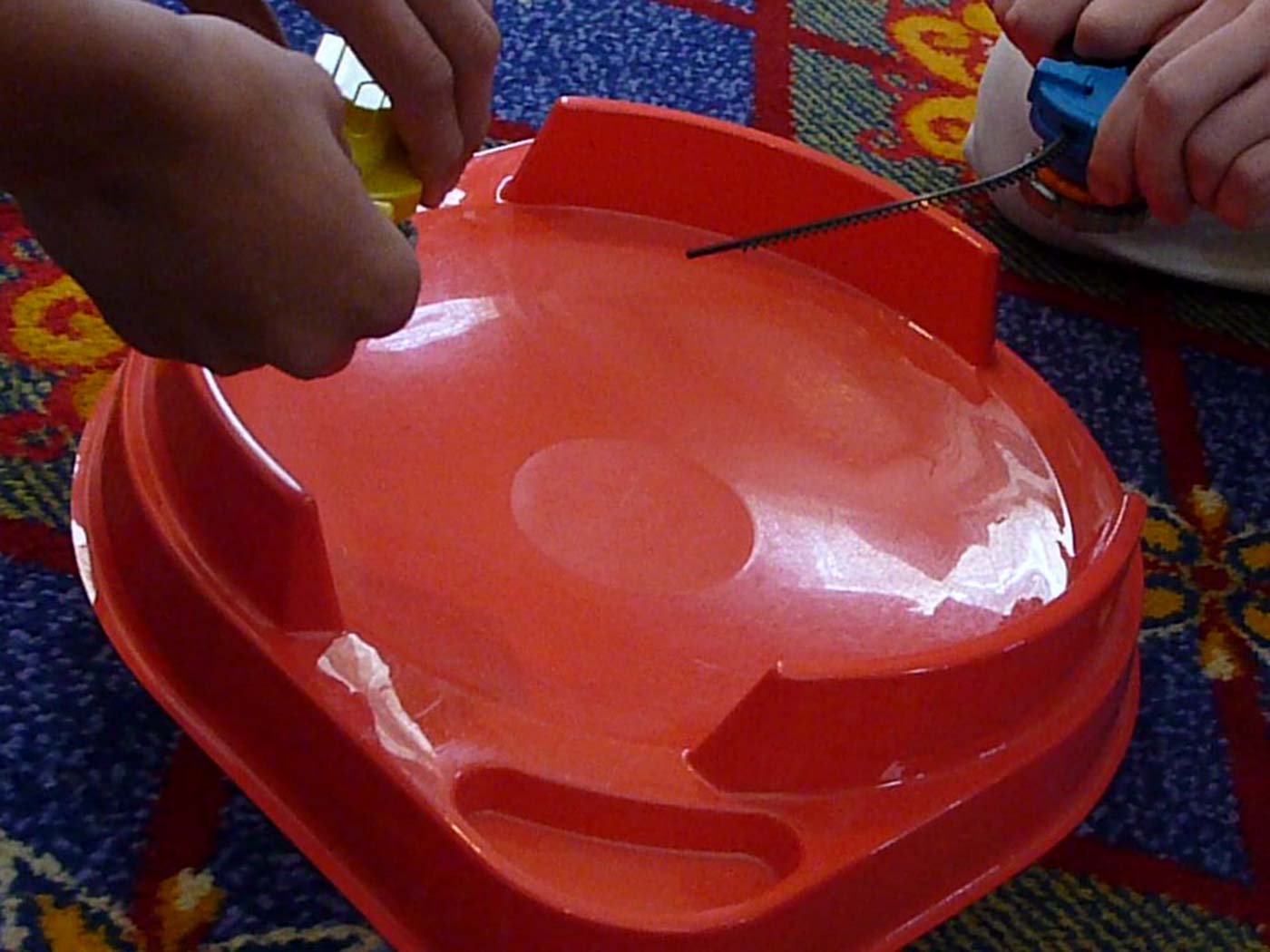
The Burst BeyStadium Standard Type cover, pockets of Hasbro stadiums, the flat areas on stadiums such as the MFB BeyStadium Balance Type or Tornado Balance, or the ramps of the Tornado BeyStadium would no longer be areas where a Beyblade could potentially win from in rare circumstances.
By reducing the influence stadium specific variables can have on the game, a more consistent environment is created across generations.
This is a noble pursuit competitively speaking, but the consistency it encourages simultaneously reduces diversity. Consistency is important for competitive play, but only within the given series being played.
Reducing the impact the stadium cover can have in the Burst BeyStadium Standard Type for instance doesn’t make the game more competitive; it’s just an arbitrary decision which diverges from the physical design of the stadium and the gameplay it produces naturally. Other variables such as the ridge around the perimeter of a stadium, the height of walls, or the slope of the bown all affect outcomes too, yet they are accepted.
Given that these definitions aim to be universal and applicable to all formats, all series, and both ranked/unranked play, I’m not sure if reducing the diversity of gameplay available through different stadiums is the best decision.
Reduce “Life After KO” Consideration
If Beyblades are permitted to win while spinning in the EPA (under specific and rare circumstances), the concept of “Life After KO” becomes a competitive consideration (I’m not sure if this is a best term as there is literally no “life” after you are officially KOed depending on how it is defined, but it gets the point across).
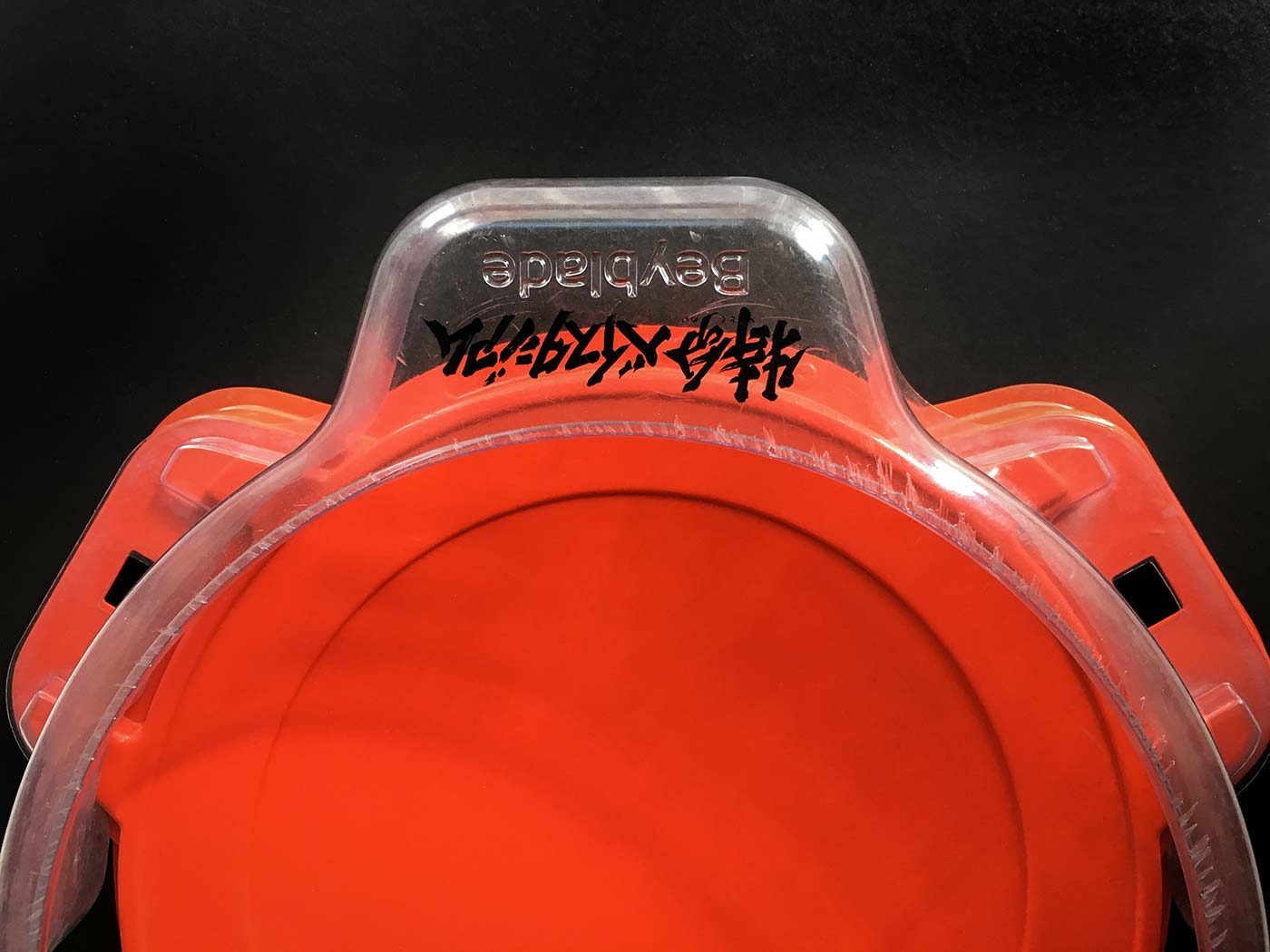
In the Burst BeyStadium Standard Type for instance, larger parts like Imperial become more competitive because it is harder for them to exit the stadium with no chance of return, which some players perceive as being unfair.
Slightly Boost the Power of Attack Types
Disabling Beyblades from ever winning while in the Penalty Area would slightly boost the power of attack types. This is because a Beyblade knocked into the PA would be required to return to continue the battle; if they don’t they would lose the battle or at best, tie with the opponent.
Why allow for Beyblades to win in the Extended Play Area?
Now, I’d like to look more closely at the reasoning for why my original proposal should be accepted.
The “play area” definition and our understanding of it is something which needs to be broad and malleable based on the general universal design features of stadiums and the gameplay they produce.
The design of stadiums is inherent to our understanding of Beyblade and to manufacturing different gameplay variations. The cover on the Burst BeyStadium Standard Type naturally creates situations like the Imperial vs Zwei example and I believe that they should be accepted on a competitive level.
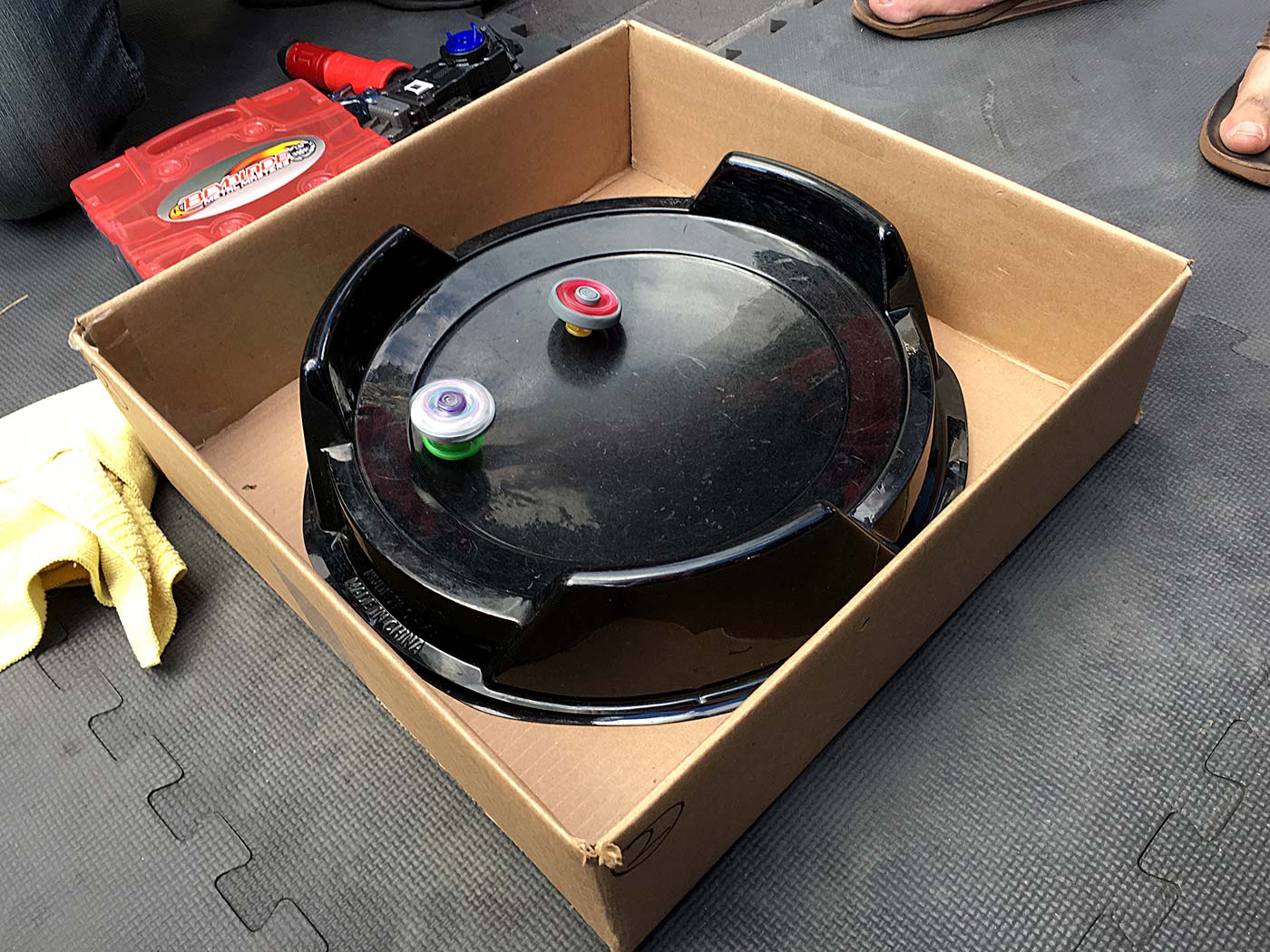
Contrasting this is a stadium like the MFB Attack Stadium. Our understanding of how concepts like “knocked-out” should be applied change when thinking about that stadium because of the way it is designed with completely open exits and no exterior areas that could be considered part of the EPA.
In the standard Burst stadium, the stadium cover means that KOing should be and is harder to achieve. Elements like the angle of the stadium floor vs the MFB Attack Stadium also have an effect on this, which we have all implicitly accepted.
Win Conditions Should Be Inflicted With Finality
The new “Knocked-Out” and “Play Area” definitions as originally proposed effectively mandate that win conditions need to be inflicted with finality.
What this means is that you cannot lose a battle if you are still in-tact, spinning, and exist either in the PPA or in the EPA with a feasible chance of quickly returning.
It is useful to think about the game in this way because at the end of the day, what is Beyblade? It’s a battling spinning top game.
Before thinking about the form of the play area, the core tenet of the game is actually that a top has to be spinning in order for it to be considered “in-play”.
Win Condition Hierarchy
With this as the basic foundation of the gameplay, we can construct a win condition hierarchy of sorts:
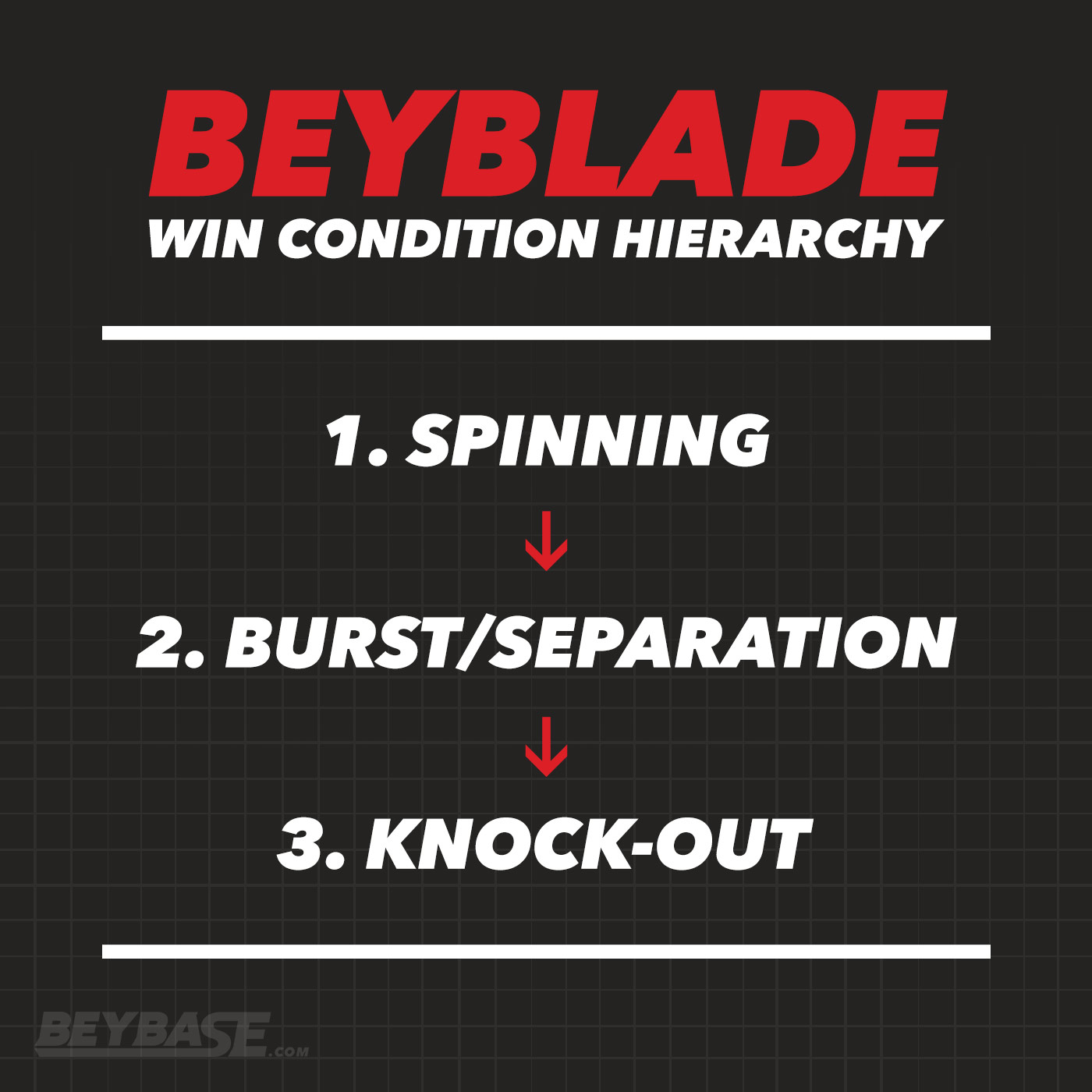
On a fundamental gameplay level, spinning takes precedence over everything else. The game starts with players launching their Beyblades into the stadium with a mechanism that causes them to begin spinning.
How Win Conditions Are Inflicted
- A burst/separation cannot be inflicted if you are not spinning or if you have been knocked-out beyond the point of feasible return.
- A knock-out cannot be inflicted if you are not spinning and/or if you are bursted/separated.
Everything is dependent on your Beyblade continuing to spin first and foremost.
As such, our understanding of secondary concepts like knocked-out, burst, or separation should begin from an understanding of this dependency.
- If you stop spinning, you can’t come back from that.
- If you get bursted/separated, you can’t come back from that because you are not spinning anymore.
- If you are to be ruled KOed, you might still be spinning, but it should be when you reach a position when you cannot feasibly return to the PPA and engage with the opponent.
The Historical Basis for the “Feasible Return” Concept
This general concept has been consistent throughout the 10+ year history of the World Beyblade Organization, as can be seen in this quotation from the Universal Rules 8 – In and Out of Play Clarifications:
A Beyblade exits the play area, but is still sitting on the edge of the BeyStadium.
Some BeyStadiums have design features outside of the playing area that Beyblades can become trapped in. If a Beyblade is knocked past the edge where it can feasibly return to the playing area of the BeyStadium, it is considered out of play and the round ends. However, if it continues to spin in an area where it can still re-enter the playing area, it is in-play. It must therefore immediately bounce back into the stadium, otherwise it is deemed out of play.
Implied by this ruling is that it would be possible for a Beyblade to win while spinning on a “design feature outside of the playing area” as long as it can still feasibly return to the play area quickly.
And in fact, all “knocked-out” rulings currently still include a similar concept anyways:
Beyblades stuck on an element of a stadium are still considered in-play.
The only time we’ve changed this (which was done as basically an emergency measure in an attempt to manufacture a more balanced representation of stamina/defense with attack types) is when we implemented the current KO ruling for formats which can use the Burst BeyStadium Standard Type (BST, BSC, MFB, MFL) for ranked play. This may have been a mistake in retrospect.
Looking at things in the way we historically have other than during the current period means that there will be some scenarios where a Beyblade is close to having lost, but hasn’t because it still meets the conditions to be considered “in-play”.
Imperial Had Not Lost with Finality
If we say that Imperial in that video loses by KO, we are invalidating the fact that it had not bursted, was still spinning AND had not reached a point where it could not return to the PPA.
It literally was still in-play; no win condition had been definitively inflicted on it.
And in fact, part of it was still in the PPA longer than Zwei. It had not fully exited the PPA. Zwei did not yet inflict a KO. It didn’t do as well in the pocket as Imperial did, but that was a calculated risk the opponent took; using larger parts in a stadium like Burst Standard gives you the benefit of increase your ability to delay fully being KOed or to bounce back in.
It doesn’t matter in my eyes that Imperial ultimately did not return because the call as to who would win the match would have been made immediately when Zwei stopped spinning, which was before Imperial could have been considered by a judge to be not spinning and unable to “feasibly return to the Primary Play Area quickly”.

Sponsored: Order the newest Beyblades at malloftoys.com!
Heads up: If you buy something through Mall of Toys, you won’t pay any extra, but I’ll get a small commission. This helps me keep things running. Thanks for your support!
Defining the Stipulations for Victory While in the EPA
But let’s say we were playing a match in a stadium with regular pockets like most Hasbro stadiums:
If the Beyblade that entered the pocket first was spinning calmly in the pocket for anything more than a few seconds while the opponent was spinning calmly in the centre, the Beyblade in the pocket would lose because despite the fact that it was spinning, there was no feasible way for it to return to the PPA. That’s fair.
What this means is that win conditions can only be achieved from the Extended Play Area in scenarios where that win condition happens BEFORE the Beyblade in the EPA would be considered by the judge to be unable to return (a decision which must be made quickly).
A Beyblade in the EPA has a mere 1-2 seconds at most to qualify for “feasibly return to the Primary Play Area quickly” in the eyes of a judge. If it doesn’t, it would be ruled knocked-out even if it stops spinning after the opponent.
Example: Spinning Calmly in Tornado Balance EPA (0:09)
In this example from HMS’ NOT DEAD! 3 in July 2014 (starting at 0:09), if my proposed ruling was used, Wolborg (the Beyblade which gets hit into the circular hole outside the PPA) would have been declared the loser within a few seconds of entering that area because it quickly becomes clear there is no feasible way for it to return to the PPA.
As such, it doesn’t meet the requirements for being able to win while in the EPA.
When we think about the game of Beyblade, the way the winner must be determined is through a win condition happening to an opponent with finality.
To take a win away from an opponent that has not yet been defeated with finality would be inherently unfair when considering the fundamental mechanics and object of the game.
Accepting the Natural Gameplay Produced by Stadiums & Large Parts
In looking at the Burst BeyStadium Standard Type specifically, the size of parts and design of the stadium are inherent to the series. The gameplay that is produced as a result of these designs should be accepted and considered as players strategize.
Stadiums have produced differing gameplay which alters how Beyblades are and should be used throughout the history of the game–that is literally the reason they exist–and the Burst BeyStadium Standard Type is no different.
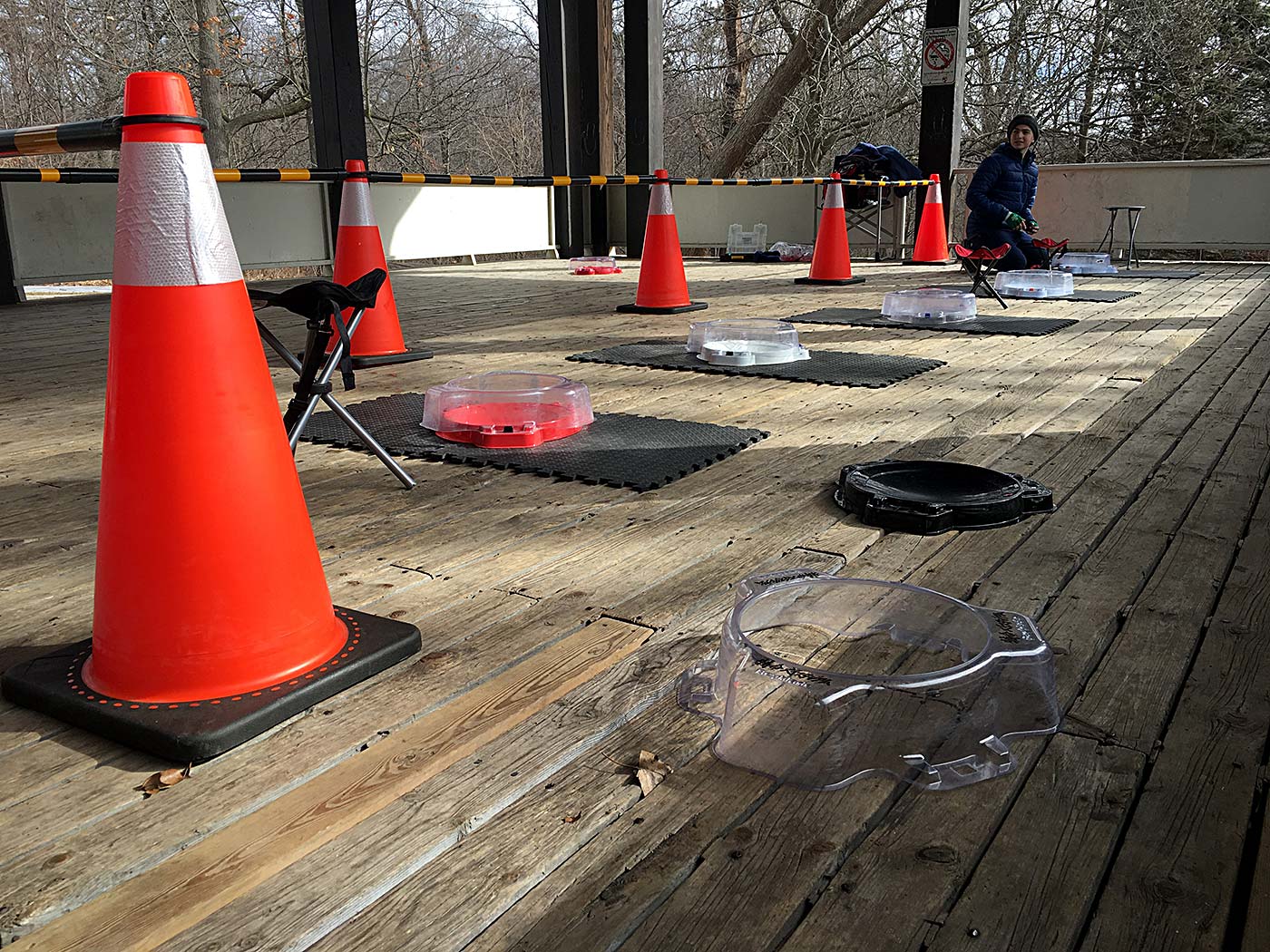
It’s fine if you dislike the design of a stadium, but the design and gameplay it naturally produces must be accepted if they are to be used competitively.
If you want different gameplay, play in a different stadium.
CitrusNinja3 and DeceasedCrab commented on this and the effect that physically larger parts can have on the game:
“I’m sure that Takara Tomy didn’t foresee making Layers as big as Imperial when designing the B-09 Stadium, so we should probably go with what the original intention of those pockets was: a Beyblade gets KOed if it stays in there. There shouldn’t be a Beyblade that’s getting an unfair advantage from a design flaw” – CitrusNinja3
“If you rule as the WBBA did, that Imperial gets the point because it did not run out of spin and fell out of the pocket before Zwei did, then you promote a meta where Life After Knock Out (LAKO) is a new important function of every layer, and maybe even disc or tip.” – DeceasedCrab
The assumption here is that when a Beyblade has left the surface of the PPA and entered into the pocket of the Burst BeyStadium Standard Type, it should be considered knocked-out even if it spins longer than the opponent and has a chance to return.
Takara-Tomy’s Intentions
If we want to look at what Takara-Tomy’s “original intention” was, we need to look at the WBBA’s ruling.
They rule that a Beyblade is not considered knocked-out until it has touched the ground outside the stadium/in the pocket.
This has naturally become harder to do as the series has progressed because of the increasing size of parts. I don’t think it is fair to characterize this as a “design flaw” because every Beyblade that is larger than the original Beyblade Burst releases would technically have that “unfair advantage”.
Beyblade in general is “unfair” in that sense because of power creep through the release of bigger, heavier, and stronger parts and launchers as the years go by. This is part of Beyblade’s identity, really.
The type of launcher you choose to use combined with the physical attributes of your spinning top affect how it will perform against others and in different stadiums.
In a competitive setting, it is your responsibility as a player to use the equipment you feel will give you the best chance of victory.
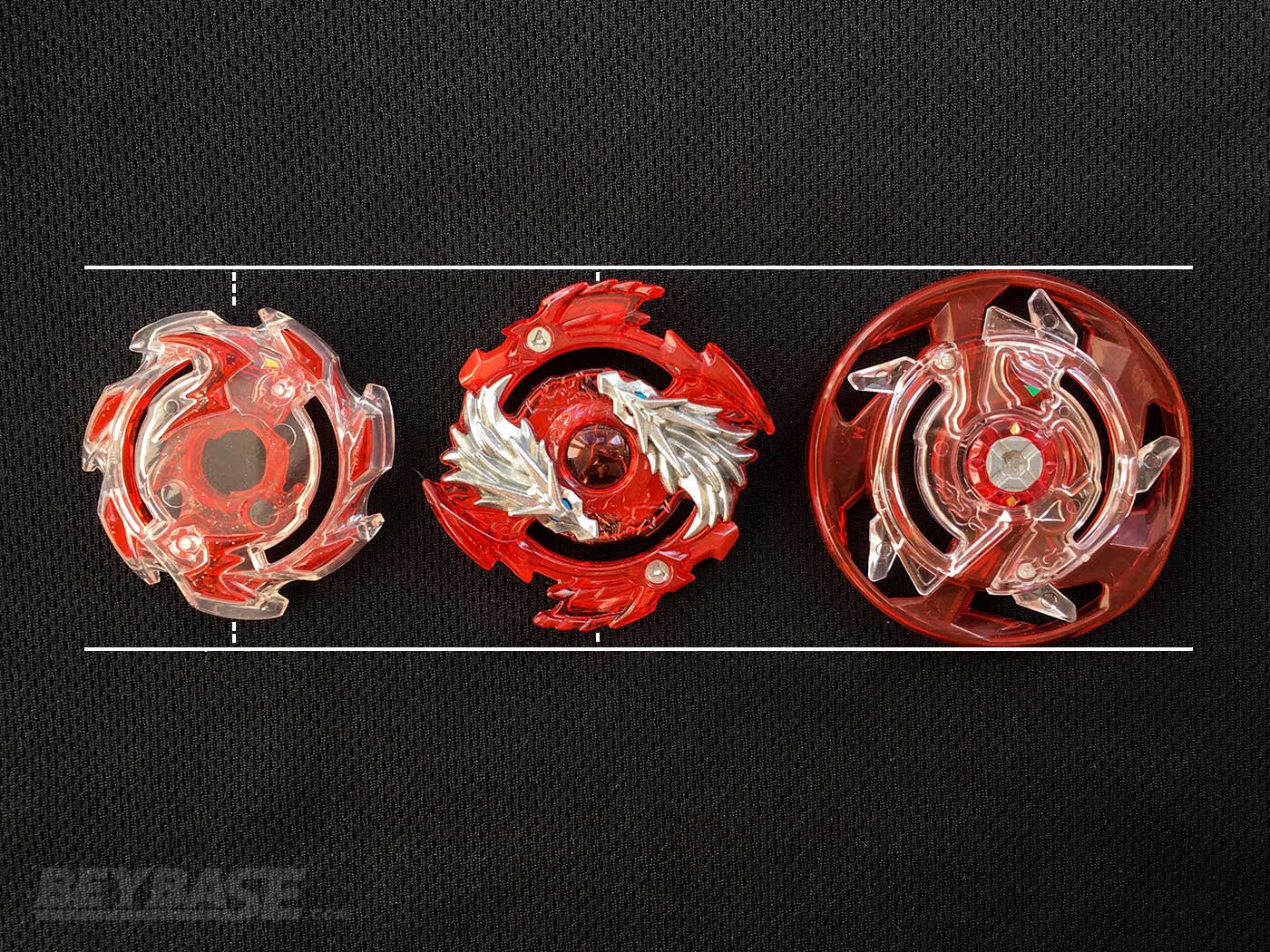
This “issue” first became most noticeable when Maximum Garuda was released, yet it was accepted that it being larger and the benefits that are associated with that were OK to continue influencing the outcome of battles. It was just a natural evolution of the series and competitive play.
Some people in reviewing the Imperial vs. Zwei example argued that Imperial only “won” because it’s larger than Zwei. This is true and it does give it an advantage in that sense, but it’s also worth noting that in certain situations the angle with which you fall into the pocket of the Burst BeyStadium Standard Type matters just as much as the actual size of your parts.
This can be seen in this example from virtuous.circle77 on Instagram, which is also between an Imperial and Zwei combo. In it, Zwei exits the PPA first but is able to prolong its life briefly in the EPA because of the way it fell ino the pocket. This helped it to win the battle.
Takara-Tomy hasn’t changed their KO ruling or released a new standard stadium with larger pockets, so we need to simply accept the gameplay the stadium we have naturally produces.
The Issue With the “Extended Play Area Should Be a Penalty Area” Proposal
In the proposals that have changed the EPA into the “Penalty Area” where Beyblades need to return from or they automatically lose, a few issues arise:
In the Penalty Area proposal, that would seem to mean in the first Imperial vs. Zwei example that it would be considered a tie.
After Zwei “KOed” Imperial, Zwei entered the pocket and stopped spinning before the point at which it would be fair to say that Imperial had no chance of returning to the PPA. But because Imperial did not ultimately return and Zwei did not officially KO Imperial until it had stopped spinning itself, a tie would be the result.
I think it’s fair to say that in this situation (and any situation), we want to avoid ties if at all possible.
There are some who may argue that because Zwei “KOed” Imperial while inside the PPA, it should be credited with the win after the fact when we see that Imperial does not return to the PPA.
However, this effectively means that you are enabling Beyblades to earn outstanding credits for a win that can be granted based on future events even if they stop spinning, are knocked-out, bursted, or separated first. Zwei would be earning a victory even though it was the first Beyblade to stop spinning and exit with no chance of return.
Doing this leans too far into the direction of a subjective interpretation of what the game should be.
Stadiums with Flat Areas in the Primary Play Area
While in almost all cases existing stadiums do not have flat areas which would be considered as part of the Primary Play Area, some do exist.
Namely, some of Hasbro’s Slingshock and HyperSphere stadiums.
These stadiums in particular have design features (the “rails” and “speed cradle” in Slingshock, and the “brink” in HyperSphere) which enable Beyblades to spin for an extended period in an area outside of the traditional “bowl” type area of all BeyStadiums.
Example: Spinning on the Brink in the Hypersphere Vertical Drop Beystadium
Situations where Beyblades spin for an extended period in these flat areas away from the opponent are not frequent, but they do happen.
One such example can be seen in this video by the BeybladeGeeks at 6:47:
In this video Judgement Joker J5 did ultimately return to the bowl, but it is conceivable that a Beyblade could win or lose from the brink itself while the opposing Beyblade is in the bowl.
If we then think about what the “Penalty Area” proposal implies, perhaps some people may frown upon that idea even though the design features in question are literally designed to be part of the PPA.
If people in favour of the Penalty Area proposal accept the possibility of a Beyblade winning from the brink in a HyperSphere stadium however, an inconsistency emerges when we think about the definitions of Play Area and Knocked-Out.
In the Burst BeyStadium Standard Type, they want Beyblades to return to the PPA in order for them to win.
But in a HyperSphere stadium for instance, while the brink would be part of the PPA, it could still create a situation where a Beyblade could win without engaging with the opponent. This is similar to the idea of winning from the EPA in my proposal.
Personally, I am fine with this because–like winning from the EPA in my proposal–it is not something easy to exploit and is an unavoidable product of the stadium design. In most cases Beyblades will engage with each other in the bowl.
If the Penalty Area proposal is what we ultimately support however, this sort of situation is something worth considering as regardless of the direction we choose, the definitions implemented should remain consistent philosophically across generations and stadiums.
What happens if we say you cannot win in the EPA?
If we say that you cannot win in the Extended Play Area, this means for example:
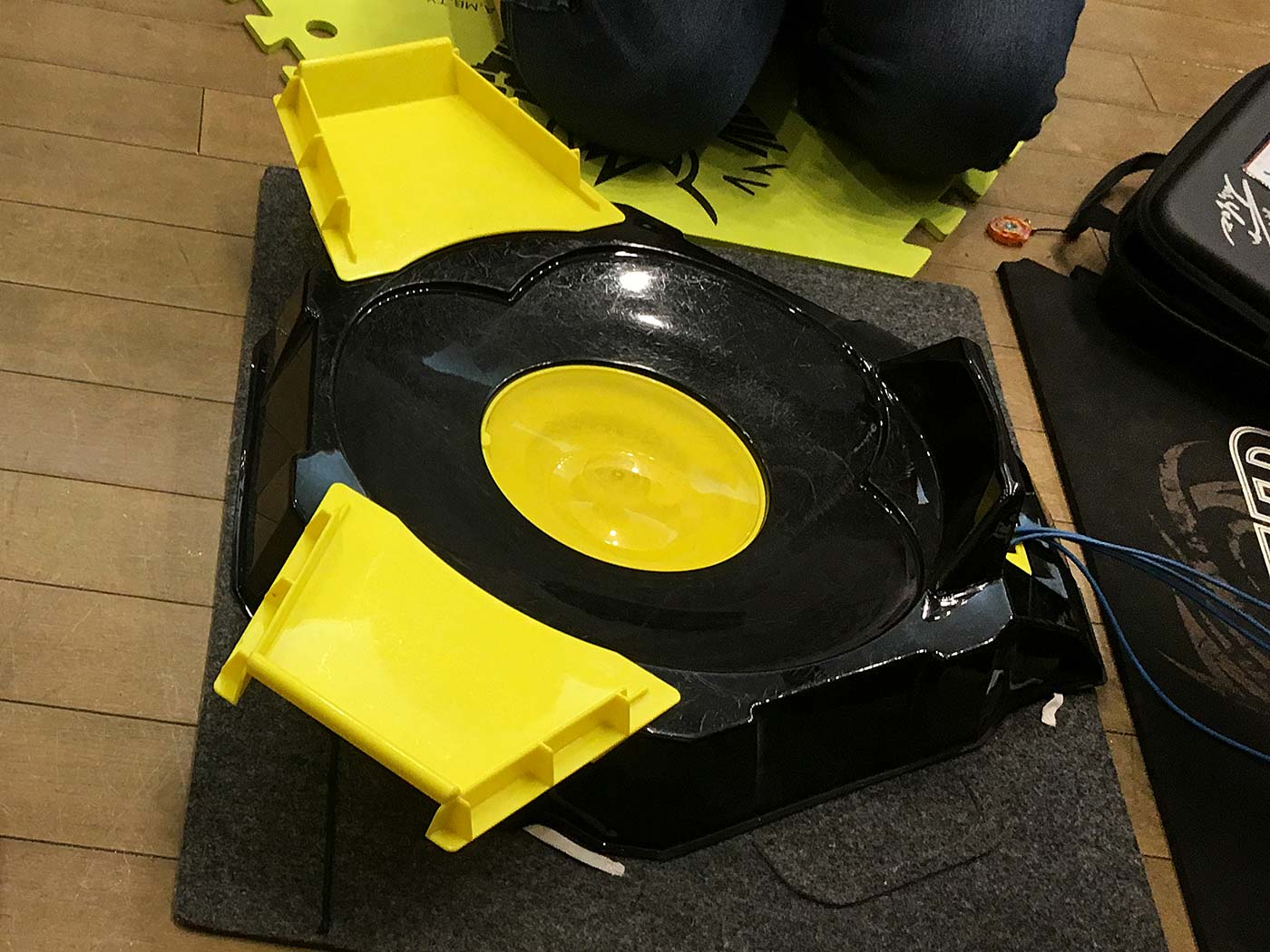
1. In the MFB Tornado BeyStadium, if at the start of a match one player launches onto the yellow ramp and their Beyblade is spinning on it, the opponent misses the ramp entirely, and then the Beyblade on the yellow ramp self-KOs before it can enter the central PPA, the round would need to be called a draw. This is despite the fact that the one player properly launched into the stadium and was spinning inside it.
2. In a situation where two Beyblades enter the EPA simultaneously and do not return to the PPA, rounds would automatically be called a tie even if one Beyblade spins longer than the other.
The only way around scenarios like these is to add a clause to the EPA (or “Penalty Area”) stating somehow that you can win from it in specific circumstances. But I don’t think this sort of complication is worth it.
The definitions need to be as simple as possible.
The Strength of the “Extended Play Area” Concept
The strength of the “Extended Play Area” concept as I have proposed it lies in its ability to universally account for design features of any kind outside of the centralized Primary Play Area inherent to all stadium designs.
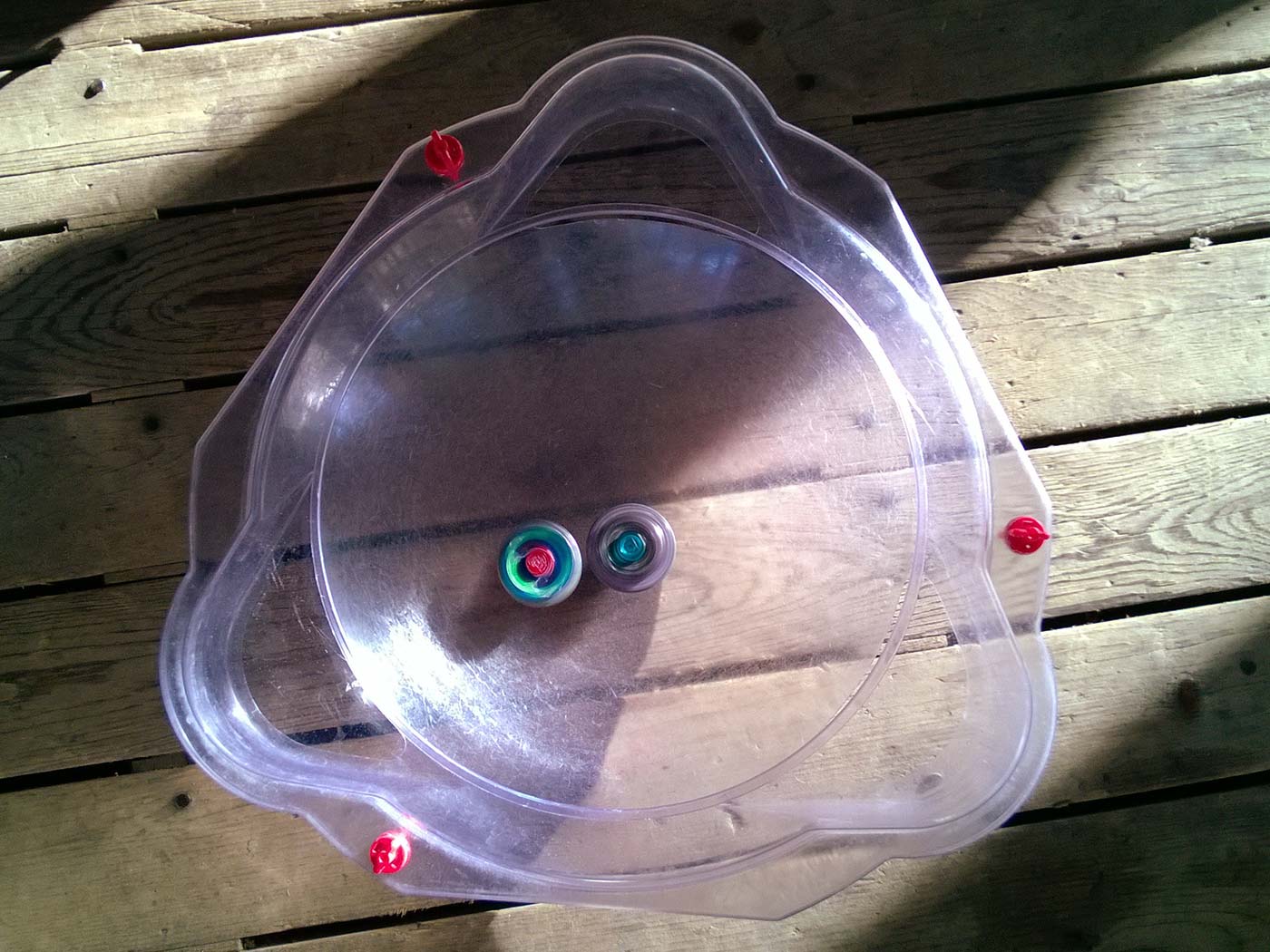
Allowing for Beyblades to win while inside of it under rare circumstances ensures that no battle will ever be ended prematurely before a win condition is inflicted with finality on an opponent and that scenarios like the above will not require special rulings.
My experience, knowledge of how the WBO has worked historically, how things are ruled in Japan, and the natural opinions of non-Beyblade players I’ve seen surveyed, makes me believe that my proposal is the most in line with what should be considered as the universal definition of “knocked-out” and “play area” for the game of Beyblade.
What do you think the KO and Play Area definitions should be? Comment below!
From this point, I am going to defer to the WBO Staff team with regards to what the final decision and definitions of Knocked-Out and Play Area will be.
We’ve explored this topic with an incredibly deep amount of consideration and ultimately, there is no “right” answer.
I strongly believe that my proposed definitions are the best they possibly can be and sincerely hope to see them implemented. To me, they reflect a respect for the inherent mechanics and object of the game. But even if they are tweaked to make the Extended Play Area into a Penalty Area as discussed, the game will still be fun and competitive. Just a bit more subjective.
Writing and publishing this article has been difficult as I fully recognize that I am running against what the majority of WBO members surveyed so far believe. But given that my perspective has been reinforced by not only the Japanese community but by people in general who don’t play Beyblade, it felt appropriate to push back on the WBO community to ensure they fully understand the ramifications of whatever decision is ultimately made.
That said, I’d love to hear more opinions from all of you. It’s a fascinating subject and I know very well that despite my research and experience, there could be other perspectives I am not considering.
Comment below as I’d love to hear from you!
4 thoughts on “Where should the “play area” of a Beyblade stadium begin and end? (Extended Play Area vs. Penalty Area)”
Comments are closed.


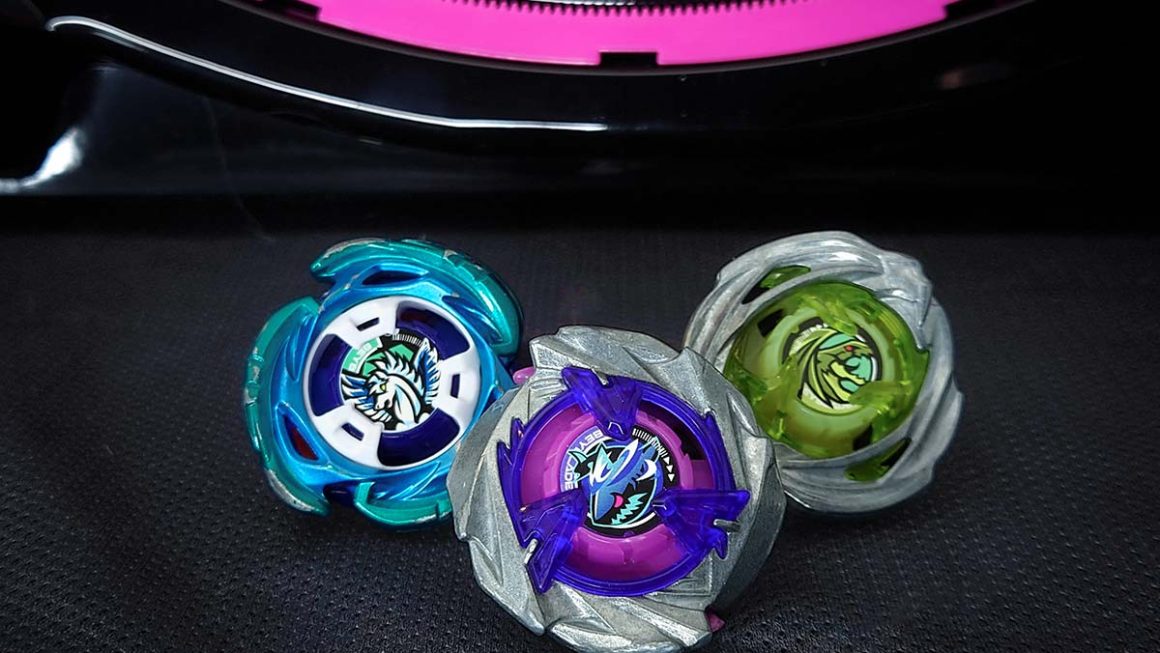
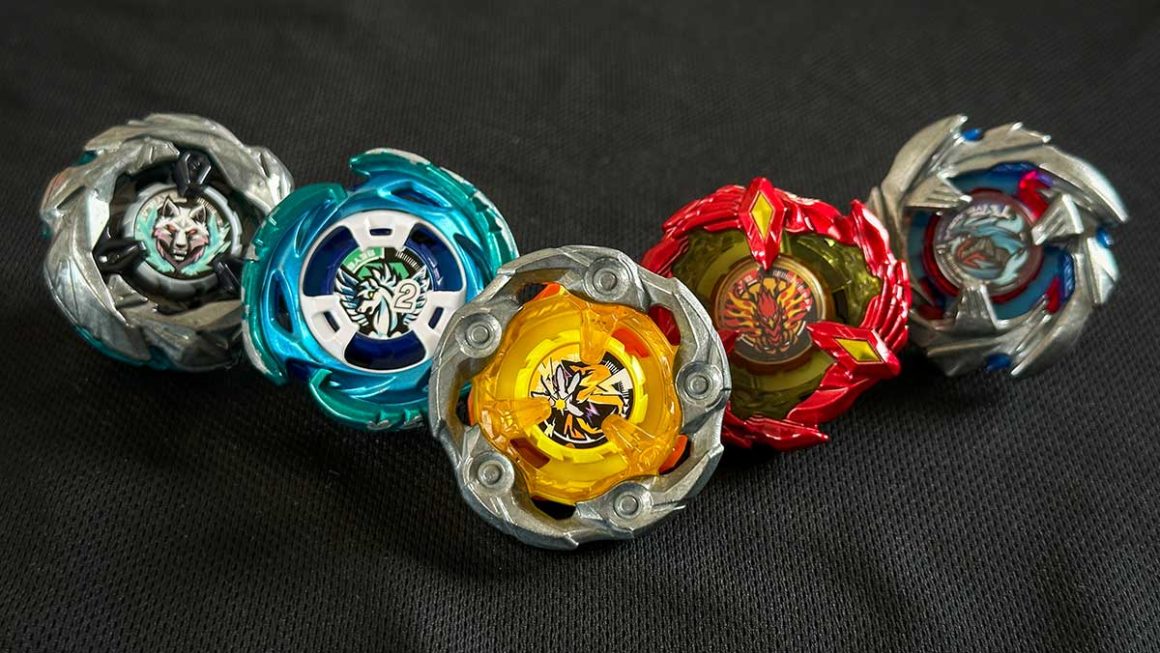
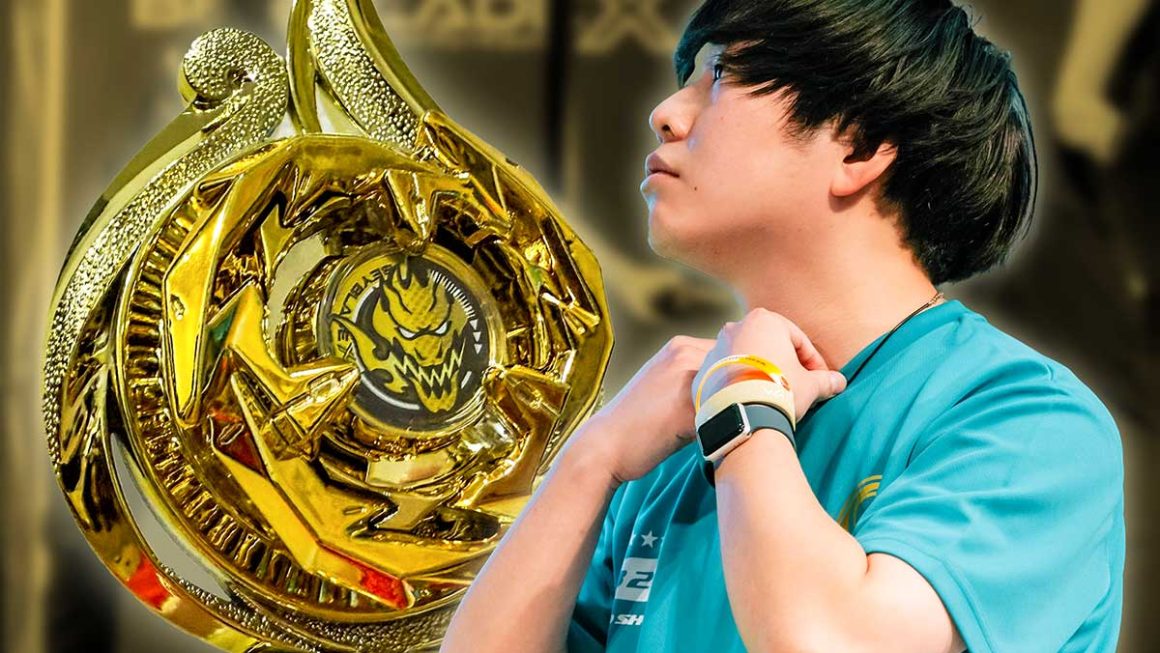
After watching the imperial vs zwei, I realized that imperial never actually re entered the stadium, it still touched the ground. The rules say the bey is still in play if it can quickly return to the play area, and imperial did not. So even though zwei touched the ground first, imperial was sent into the pocket first and still touched the ground, so zwei should get the over finish.
In my proposed definitions they do not state that a Beyblade has to re-enter the Primary Play Area in order to be considered in-play. Only that it must have a feasible chance to return when a judge makes a call while it is in the Extended Play Area. However realistically, a Beyblade can only be considered in-play within the EPA for a matter of seconds before a judge would determine it was out-of-play.
In the first Imperial vs. Zwei example (which is what I assume you’re referring to), Zwei was the first Beyblade to exit with no chance of return since stopped spinning first. Imperial in this rare case couldn’t be judged to be unable to return before Zwei was defeated definitively first. Therefore, in my opinion, Imperial is the clear winner.
if it were up to me, i’d say the rule should be : whoever touches the ground FIRST is the one declared knocked out. Beyblades can be knocked into the pocket, still be spinning around, then bounce back into the play area….but i dont think i’ve ever seen a beyblade hit the GROUND/table, which is a couple inches below play area, and come back in (I could be wrong tho and not paying enough attention)…..since in the video i see Zwei hit the ground first while Imperial was still spinning above the ground, i would rule the point to Imperial. just my 2cents!
Imperial should win because Zwei stopped first.